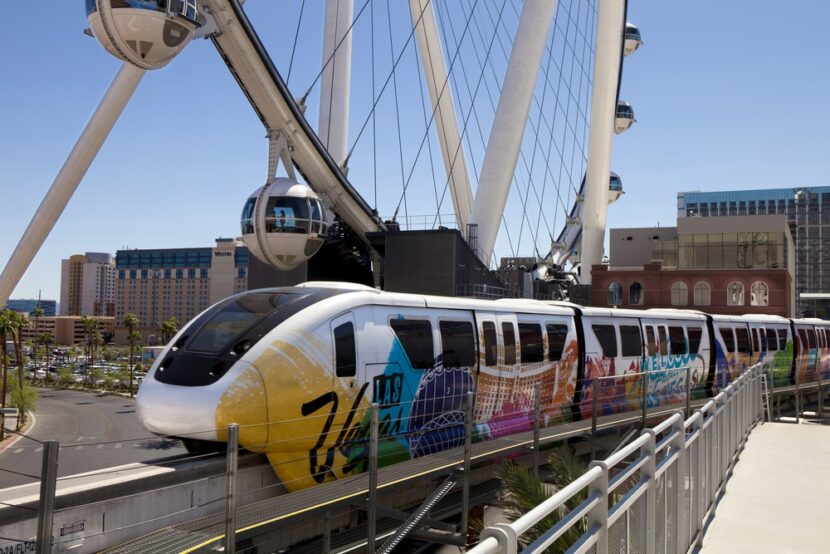LAS VEGAS — Those trademark Las Vegas lights may one day woosh by windows of a light rail train ferrying visitors from the airport to casino lobbies.
Local transportation leaders are floating a 30-year-plan that could cost more than $12 billion involving everything from wider sidewalks and more pedestrian bridges crisscrossing the Las Vegas Strip to extra monorail stops and planning for a light rail route linking the airport to downtown.
It’s Sin City’s gamble to keep travellers coming to its casinos and convention centres well into the future.
“We can continue to pursue the status quo, as we have historically,” states the Transportation Investment Business Plan from the Regional Transportation Commission of Southern Nevada. But that would mean severe consequences to the area’s tourist- driven economy that competes with destinations already connecting their airports and city centres with mass transit, it notes.
The plan was born from a single group of transit officials, tourism leaders, taxi owners, hoteliers — some of whom had never spoken before until the CEO of the Las Vegas Convention and Visitors Authority convened them two years ago, tasking them to leave self-interest aside.
Factoring in debt payments and accounting for inflation through the year 2046, the price could be higher than $14 billion. And making it all work would require finding another $3.7 billion to $6.6 billion from other sources besides possible local, state and federal funding identified in the plan.
Consultant Jeremy Aguero, a Las Vegas-based economic analyst and one of the plan’s architects, said the price tag is relatively small when weighed against the region’s $95 billion tourist-driven economy.
What it doesn’t include is the cost to build and maintain the light rail system, itself. That could amount to $2.1 billion to $12.5 billion depending if the track is below, at or above ground, and could take more than a decade to build.
The transportation blueprint envisions planning the light-rail system through 2022 before spending another five years on its final design. From start to finish, light-rail systems can take 12 years to build, said transit planning consultant David Knowles, hired to help with the plan.
Thirty years is a long time, though.
“We’re going to be living in an automated world. Peoples’ behaviour is going to be completely different,” said Genevieve Giuliano, a transportation expert at the University of Southern California. “Maybe Las Vegas should be thinking about when these vehicles are driving themselves.”
Asked about automation, Aguero said it’s going to take “a really long time” for the public to adopt it.
The plan will get another 60 days for public review before a vote in March by the Regional Transportation Commission. If approved, projects would begin to be integrated into budgets. The transportation agency, the cities, the state and businesses would each need to make it happen.
Talk of linking the Las Vegas Strip to McCarran International Airport has been long discussed.
“It just blows me away that we still have not moved forward on that,” said Clark County Commissioner Chris Giunchigliani at a meeting this week when the plan was discussed.
In 2005, then MGM Mirage Chairman Terry Lanni anticipated the just-opened Las Vegas Monorail being linked to the airport along with a people-mover on the other side, shuttling visitors from Mandalay Bay to Treasure Island with stops inbetween.
But the privately-financed $650 million monorail suffered financially, declared bankruptcy in 2010 and has since been working to boost its ridership along a few miles behind the Strip that connects several hotels with the Las Vegas Convention Center, but doesn’t go the airport or downtown as originally planned.
As it is now, a convention as large as the upcoming CES, the annual consumer electronics show that attracted more than 176,000 last year, involves countless hailed taxi-cabs at the airport and 360 shuttle buses moving attendees between conventions centres to hotels at a huge expense to the convention organizers. And that’s with attendees accounting for some 147,736 rides on the monorail.
“You have three of the largest convention centres and so many hotel rooms,” said Karen Chupka, senior vice-president with CES. “It only makes sense that you should have a world-class transportation system.”
